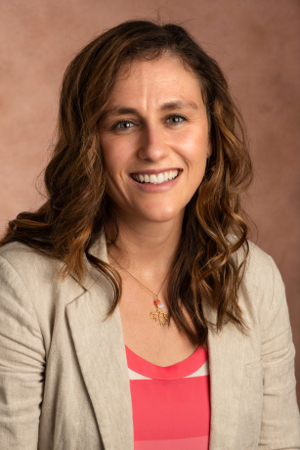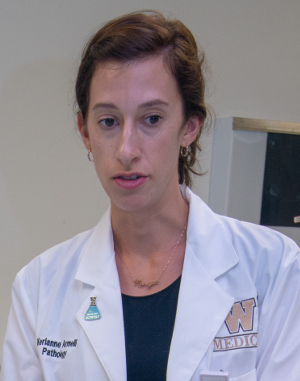
Since 1997, the family of Mark and Janet Davies had been left with unanswered questions about what happened to the couple after the Davies’ plane disappeared shortly after taking off from Drummond Island.
This past summer, a team that included two forensic anthropologists from WMed finally provided the Davies’ loved ones with the answers they had sought for so long.
“It’s one of those things where even though the outcome is sad, it does provide that closure,” said Carolyn Isaac, PhD, an assistant professor in the medical school’s Department of Pathology who also serves as a forensic anthropologist for the Office of the Medical Examiner and Forensic Services. “It allows the family to let go of that concern and uneasiness about what happened to their loved ones and, in a way, put that to rest.”
Dr. Isaac and Forensic Anthropology Coordinator Kerianne Armelli became involved in the Davies case in July, shortly after the wreckage of the Davies’ single-engine Piper airplane was discovered in the Hiawatha National Forest, near St. Ignace, in Michigan’s Upper Peninsula.
The plane, Dr. Isaac said, was found by a U.S. Forest Service worker who came upon the wreckage in a dense and remote part of the forest less than a mile from a main roadway and the North Country Trail.
“It was the most dense forest I’ve ever seen,” Armelli said.
After the discovery, Dr. Isaac said she was contacted by Jane Wankmiller, PhD, a friend and former graduate school classmate at Michigan State University who is now the director of Northern Michigan University’s Forensic Research Outdoor Station (FROST). Dr. Wankmiller asked Dr. Isaac to assist with the recovery of human remains found with the plane and the identification of those remains using specialized radiography equipment from WMed.

Dr. Isaac said she and Armelli did not travel to the crash site until August, which gave forest workers time to clear a path for anthropologists and investigators from the Federal Aviation Administration and National Transportation Safety Board to access the site with their equipment.
“With anything like this, I’m always excited in a way to get out there and help and we had time to think ahead about what challenges we were going to be faced with because every scene is different,” Dr. Isaac said. “We have to predict and adapt to the situation.”
Once they were on scene at the crash site, Dr. Isaac and Armelli said conditions proved challenging. They saw the plane, which had crumpled in on itself after colliding with a cropping of trees and parts of the plane were scattered about. Many of the skeletal remains they recovered were fragmented and had to be retrieved from the root-entrenched forest floor.
“It really was a matter of sifting through everything,” Armelli said. They said they worked closely with Dr. Wankmiller and anthropologists from NMU, scouring a 100 square-foot area for two days.
When their work at the scene was done, Dr. Isaac said the team was able to use dental records to positively identify the Davies and provide closure for their family members.
“I spoke with Janet Davies’ sister,” Dr. Isaac said. “She talked about how they had finally been found and it was like it all happened yesterday again. All of the emotions came back.
“Hopefully, this provided some closure because even if a family doesn’t realize that something like this is hanging over them, it always is, always that question of what happened.”
